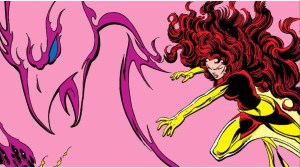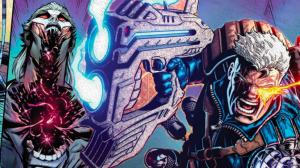When it debuted in 1975, Giant-Size X-Men delivered one of the most important stories ever told about Charles Xavier’s team of mutant heroes, introducing a new generation of X-Men that would redefine the franchise. Since then, while its publication has been sporadic, the Giant-Size X-Men title has continued to spotlight stories that have not only marked pivotal moments in the evolution of the X-Men but also shaped the broader history of mutantkind. This year, in commemoration of the 50th anniversary of Giant-Size X-Men, Marvel has launched a five-part story. This series, all printed in the original Giant-Size X-Men format, might be its most memorable tale yet.
Videos by ComicBook.com
The original Giant-Size X-Men—which introduced some of the most beloved and influential characters in X-Men history, including Storm, Wolverine, Colossus, and Nightcrawler — casts a long shadow over the new Giant-Size X-Men event. This latest storyline centers on Legion, one of the most powerful yet unstable mutants in existence, as he attempts to alter the past in hopes of creating a better future. While his actions risk disrupting Marvel continuity in unpredictable ways, they also offer intriguing alternative perspectives to some of the X-Men’s most iconic and beloved stories.
Legion’s Reality-Bending Quest to Remake History
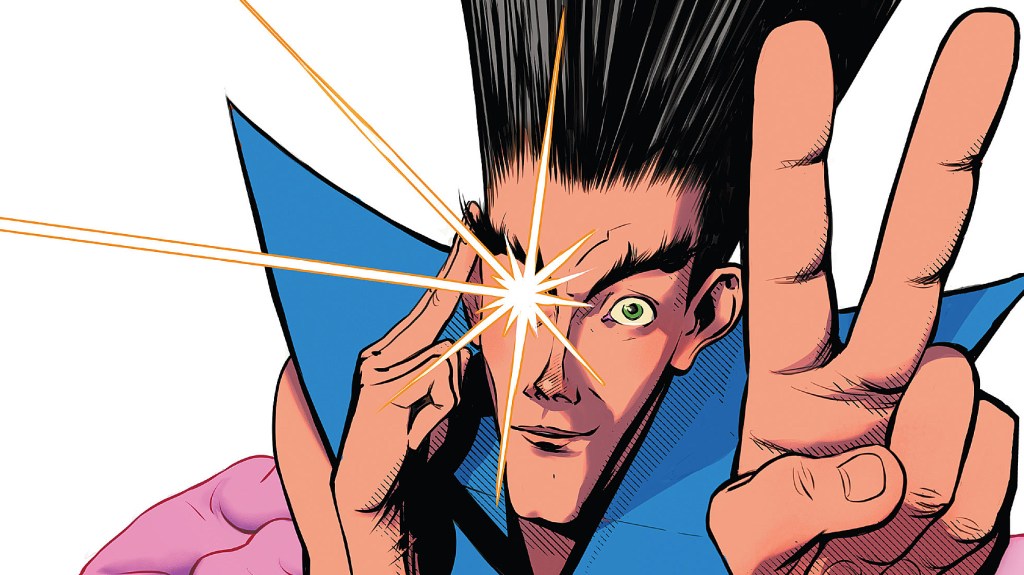
Few heroes in the Marvel Universe are as complex as Legion. His complexity stems from two fundamental powers. First, he possesses the ability to alter reality on a universal scale with a single thought. In other words, Legion can rewrite the very rules of existence at will. This power alone would be nearly impossible to oppose if controlled by a single consciousness. But with Legion, that isn’t the case, which brings us to his second core ability: the power to absorb other people’s psyches into his mind, where they manifest as independent personalities. Each of these personalities can access Legion’s core reality-warping abilities to express their own unique powers.
The challenge is that David Haller — the original personality — suffers from severe dissociative identity disorder, triggered by a traumatic childhood event. As a result, he frequently loses control to one of his many alternate personas, which are said to number in the hundreds and continue to grow. Every time control shifts, there is the danger that the dominant personality may be malevolent, using their powers to unleash chaos, harm, or even death.
Legion, who is the son of Professor Charles Xavier, once decided to fulfill his father’s dream of a world where mutants and humans coexisted peacefully. To achieve this, as depicted in the “Legion Quest” storyline, Legion traveled back in time to eliminate Magneto before he developed the malicious intentions that fueled anti-mutant hatred since the 1960s.
This concept of time travel to “fix” history is also central to this year’s Giant-Size X-Men event. A fragment of Legion’s consciousness, somehow detached from David Haller’s core personality, has re-embraced the idea of altering the past to rectify whatever caused its separation. And just like his attempt to kill Magneto, this endeavor is causing massive changes to Marvel Comics’ continuity.
Legion Proves He’s Better Than Dark Phoenix
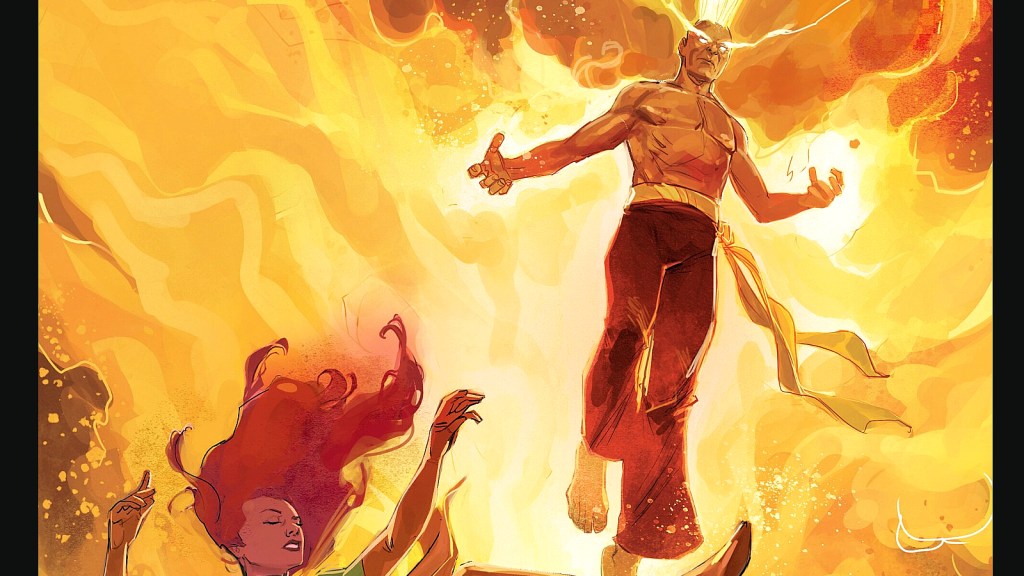
In Giant-Size Dark Phoenix Saga, Legion appears to enter the story during the events of Uncanny X-Men #135, when Dark Phoenix reveals herself by destroying the X-Men’s skycraft over the Central Park Reservoir. But this version of the events is different. The Dark Phoenix has already destroyed a sun, killing billions of lives — meaning she’s in full Dark Phoenix mode — and the X-Men have even less of a chance against her than they did in the original story. That is, until Legion intervenes.
He confronts the Phoenix Force, which has possessed Jean Grey. He offers it something it cannot resist: the power of a host with limitless potential, derived from countless personas within his fractured mind, all of whom are willing to surrender themselves to the Phoenix’s influence. It’s a proposition the Phoenix Force, driven by its hunger for infinite power, cannot refuse. It promptly abandons Jean Grey as its host. Jean, left behind but spared, is shaken yet stronger. Embarrassed by her near fall into cosmic destruction, she emerges more mentally resilient and more determined than ever to do the right thing, should the moment demand it again.
That situation develops quickly as the Phoenix Force, now fortified by Legion, returns to Earth seeking the death of Ms. Marvel — the hero from the Giant-Size X-Men event. This leads to a confrontation between the X-Men and Legion, which ends in their deaths — an occurrence that did not happen in the original timeline. While Ms. Marvel overpowers Legion, she cannot control the Phoenix Force, which quickly repossesses Jean Grey once Legion is defeated. However, having no illusions about the true nature of the Phoenix Force this time, Jean Grey sacrifices herself, just as she did in the original story.
So, while Legion’s influence doesn’t alter how Dark Phoenix is ultimately defeated, it introduces some compelling consequences to consider. Most notably, there’s the emergence of a Jean Grey who is more grounded — and thus, arguably a stronger version of herself. This raises the question of whether Jean Grey should have ever been resurrected, given that in this iteration, she died as Marvel Girl seemingly before Dark Phoenix had fully manifested. Conversely, if she is to be resurrected, the deeper question becomes how she would reckon with the loss of her love, Scott Summers, and her closest friends: Storm, Wolverine, Colossus, Nightcrawler, and Angel — all of whom are dead.
To be clear, Giant-Size Dark Phoenix is neither a retcon nor a “What If?” story. Instead, it’s a creative reimagining of the original saga, introducing plausible in-continuity tweaks that deepen the narrative. These changes highlight how Jean Grey’s original act of self-sacrifice — an event that unfolded in the background of the original series — carries personal, team-wide, and even universal consequences. Additionally, the story continues the Giant-Size X-Men event’s emphasis on Legion as a pivotal figure in shaping the past, present, and future of the X-Men – and showing just how powerful he truly can become.
The Long Arms of Legion and Their Effect on the Age of Apocalypse
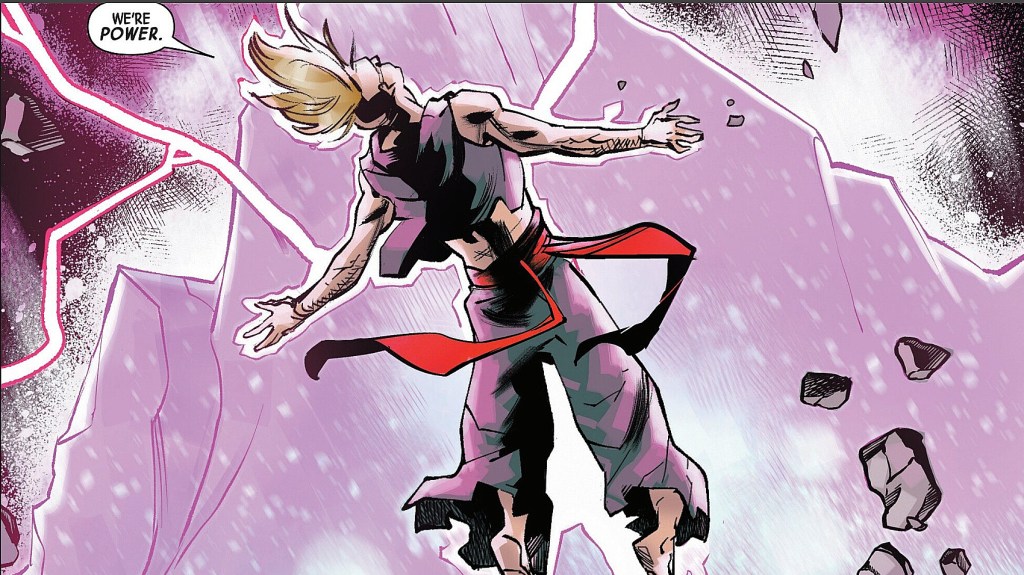
In Giant-Size Age of Apocalypse, Legion and Kamala enter the alternate dystopian reality created by Legion’s initial time-travel attempt. As fans may recall, just as Legion was about to kill Magneto in X-Men: Alpha, Xavier steps in to take the strike and is killed instead. This event sets off a chain reaction that leads to Apocalypse’s rise to power over much of North America, with the X-Men, now led by Magneto, fighting to overthrow him.
As Giant-Size Age of Apocalypse begins, Ms. Marvel and Legion — still weakened from his previous battle against Jean Grey and Kamala during their last time stop — encounter Rogue and other members of Magneto’s X-Men. They are preparing for a final assault on Apocalypse, hoping to seize the M’Kraan Crystal, which had been used in the original series to travel back in time and prevent Legion’s attack on Magneto that ultimately led to Xavier’s death. Legion and Ms. Marvel agree to help. However, just as the team is on the brink of success, Legion — realizing the crystal may hold the key to locating David Haller — betrays them and attempts to claim its power for himself, seemingly absorbing much of its energy. Before he can finish, Ms. Marvel intervenes, and the two are once again pulled into a time jump.
Though his presence was brief, Legion’s impact was profound. His interference – specifically, robbing Apocalypse of the M’Kraan Crystal — ironically helps Apocalypse eliminate any remaining threat the X-Men might pose to his rule. In doing so, Legion effectively ensures the triumph of Apocalypse – at least until the nuclear bombs fall. More importantly, with Xavier still dead, the Age of Apocalypse now appears to persist as a viable alternate timeline within the Marvel Multiverse.
One possible implication is the need for yet another mission — likely driven by Bishop or perhaps now Ms. Marvel — to retrieve the crystal before Legion arrived in the Age of Apocalypse and restore the timeline that originally led to its creation. Indeed, judging by the “Revelations” mini-chapter at the end of the issue, Legion’s appearance has clearly triggered consequences that are certain to unfold in future stories. Regardless of what Legion’s interference has wrought and whether it can be reversed, his appearance casts the entire storyline in a new light.
First, Legion gets to witness firsthand the consequences of his choice to try and kill Magneto. In the original storyline, he only saw this through a brief glimpse into Bishop’s mind. Whether this direct observation will impact him — especially with David Haller’s presence to filter it — remains to be seen, but it’s an interesting tweak. Beyond Legion himself, his decision to bring Ms. Marvel along also adds context to the Age of Apocalypse. During their heart-to-heart talk before the final battle, Rogue imparts significant wisdom to the young hero about what it truly means to be both a mutant and a hero. That colloquy will undoubtedly influence Ms. Marvel’s adventures, no matter what time period she finds herself in.
Ultimately, Legion’s appearance in this year’s Giant-Size X-Men event is not just to revisit some of the X-Men’s most important and popular storylines, but to deconstruct them, exposing their deeper foundations while exploring their legacy through fresh eyes. Legion’s quest serves as the driving force, and his timeline tampering is more than a plot device; time itself becomes an active character. Once again, his attempt to “fix” history backfires, destabilizing the original mythos, with, at this point, untold consequences. Meanwhile, Ms. Marvel provides a compelling new foil to his disruptions.


